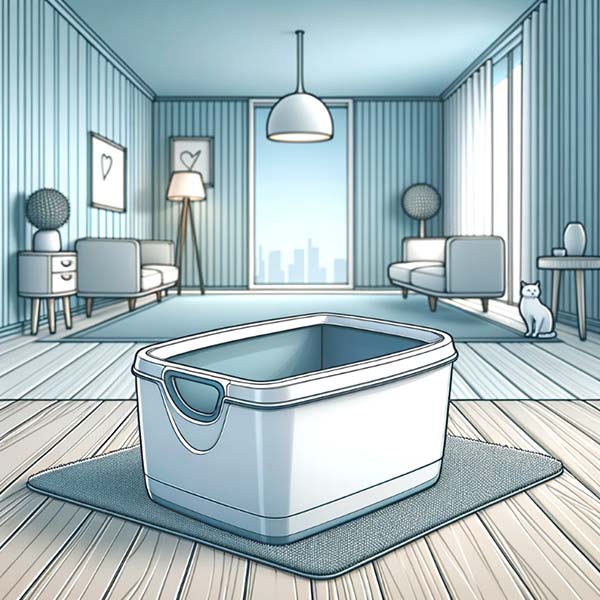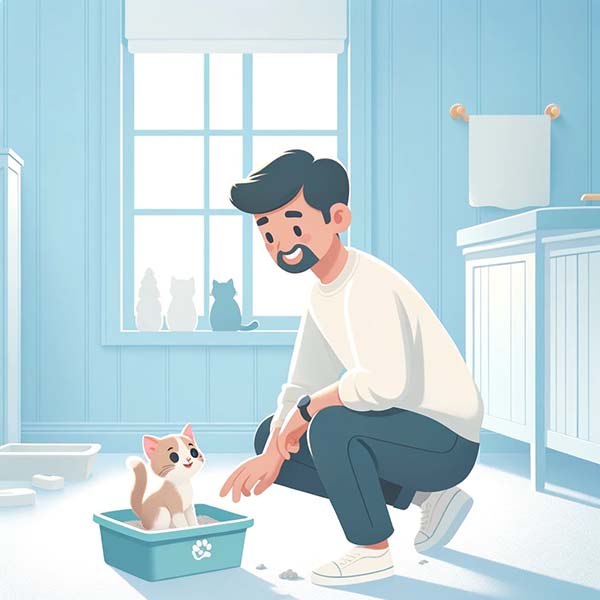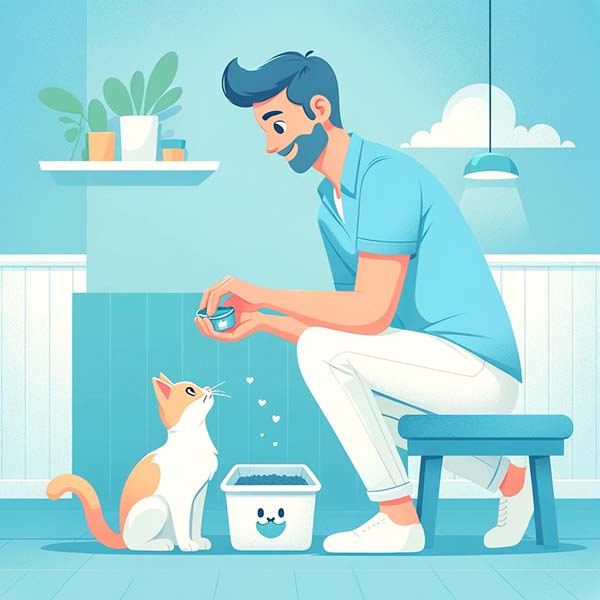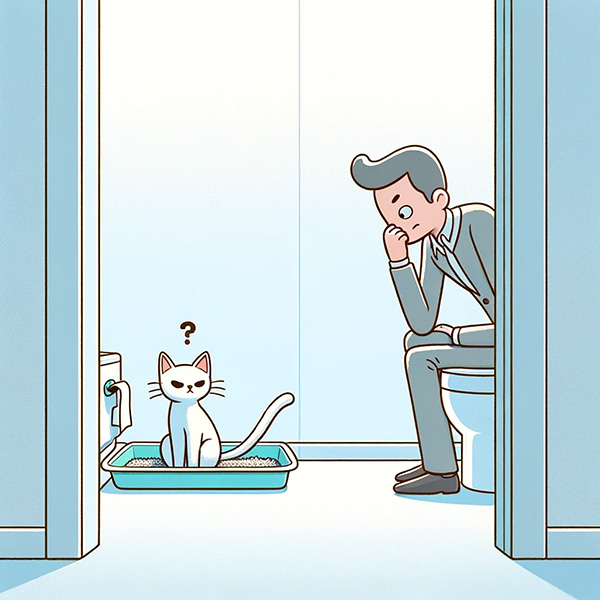When you bring home a new kitten, it can be overwhelming for everyone, including pets and people. Litter box training is one of the first few things cat owners typically want to get under control immediately, but it can often be stressful when figuring out the logistics.
Learning how to use a litter box is an important part of early development. With your help, your kitten will learn to use the litter box fairly quickly. Kittens naturally understand how the litter box works, and providing them with the proper tools can help the process. Here are some basic kitty training ins and outs – how many litter boxes to have, where to place them, and what to do if your kitten isn't using them appropriately.
How to Litter Training Kittens Step By Step
Step 1: Choosing the right Litter Box

Choosing a litter box sounds like a simple task until you get to the store or online search and realize how many different options there are. It is important to consider a few factors here – including what makes the most sense for you and the kitten.
Be Cautious With Robot Litter Box
Many cat owners may be tempted by the new, big and beautiful automatic-cleaning robot litter boxes, but these may be intimidating for your new kitten, who is already overwhelmed and unfamiliar with the environment.
The Right Size
Your cat's litter box should be large enough for the kitten to move, turn around, and bury their defecations – typically about 1 and ½ times their length – but not too big as it could be unapproachable.
Covered Design
Covered litter boxes are also not recommended for training purposes, as cats are usually more comfortable urinating and defecating in open-air environments.
As your kitten grows, you can upgrade the litter box size and the type of litter box you use. Your kitten needs to be comfortable with the placement and environment before changing the size or type of the litter box.
Step 2: Picking the right type of cat litter

Once you select the size and type of litter box, the next step is choosing a cat litter. While it may sound like it should be a simple selection, there are many types of cat litter on the market: pine, pellets, sand, granules, clay, clumping, sifting, scented, unscented, etc.
Fine Grains
Kittens prefer soft and finer-grain that are gentle on their paws and easy to dig and bury. You can find kitty litter that is designed to be used by a kitten.
Non-Clumping
When it comes to non-clumping versus clumping litter, it is recommended that pet owners avoid clumping litter until the kitten reaches at least four months, as clumping litter can cause an upset stomach or blockage if ingested. Like human babies, kittens learn and explore with their mouths. Therefore, pet owners should pick either non-clumping cat litter or pellet litter. Because the kitten can ingest cat litter, you may want to choose corn or wheat-based scoopable litter.
Dust Free
Kittens have sensitive respiratory systems and can be affected by dust and other particles in the cat litter. These dust and particles can cause potential respiratory problems, allergic reactions, skin irritations, eye irritations, and sinus problems in kittens. For these reasons, it's best to go with dust-free cat litter made from materials like corn, wheat, walnut shell, silica gel crystals, or shredded paper. These materials produce much less dust than traditional clay litter and are a better and healthier choice for your kitten.
Unscented
While it may be attempting to get scented cat litter to mask any foul smell, most cats prefer unscented cat litter. Cat's noses and sense of smell are quite a bit more fine-tuned than humans and even some dogs, and the fragrance can deteriorate them from using the litter box. And even though the cat litter is unscented, it does not mean it cannot absorb and eliminate the natural ammonia odors. If odor is a concern of yours, seek unscented odor control cat litter.
If you are unsure which cat litter to go with, you can purchase multiple cats litters, place them in boxes next to one another, and see which cat litter cats use more often to determine which they prefer.
Once your kitten becomes accustomed to using the litter box, you can change the litter at any time. To change cat litter to a different type, slowly incorporate the new litter in the box for an extended period until the boxes are 100% the new litter.
Step 3: Number of Litter boxes And Where To Place Them

A general rule of thumb for determining the number of litter boxes needed in a home is one per cat plus an additional one. It is also essential for litter training purposes to have multiple litter boxes.
When it comes to litter box placement, there are a few factors to consider: location, visibility, and accessibility. Having one litter box on each floor of your home and in a quiet location is essential. Each kitten's litter box location should be easy to access and in a visible location. While cat owners often do not like the litter boxes to be placed out in the open, for young kittens' litter box training purposes, it is important not to hide or obstruct it so that the kitten can easily access the boxes.
Cats also usually prefer that the boxes have an adequate amount of space between where they use the bathroom and where they eat, so make sure it is far enough away from their food and water bowls.
Step 4: Introducing your kitten to the litter box

Once the litter box is set up, take your kitten and physically place it in each box. For a very young kitten, gently grab its front legs and make digging motions to stimulate its natural instinct to dig and bury. Your kitten may use the litter box immediately but don't worry if it doesn't.
When the cat is ready to get out of the litter box, allow them to explore the area. It is important to avoid interactions and distractions while exploring so the kitten can understand the box and become comfortable with the surroundings. Ensure that the boxes stay in the same location until the kitten is fully accustomed to the location and uses the litter box appropriately and consistently.
Step 5: Positive Reinforcement

Accidents can happen. The best tip is to be patient with your kitten and positively reinforce him or her when s/he uses the box appropriately.
In order to positively reinforce litter box usage, wait until the kitten is completely finished urinating and defecating, and then immediately reward the behavior with treats. Cats typically are food-motivated and respond better to treats than to praise.
Step 6: Troubleshooting

Most kittens catch on to litter box training very quickly, and some barely even need to be trained due to their instinctual nature. If you are training your kitten consistently, it typically takes a few days to a few weeks for your kitten to be fully accustomed to the new routine.
If the kitten is consistently having accidents, there are several factors you can consider and reconsider.
Re-evaluate the litter box
Begin by re-evaluating the litter box size, litter box type, and cat litter type. Your kitten may prefer a covered litter box, the litter box is too close to its food or is difficult for them to access. Try switching out the cat litter to see if there is another type they prefer, or make sure there is enough litter in the litter box.
Location
If you have adult cats at home, the location of your little box is crucial. You want to make sure it's not a place where your adult cats can block the kitten from accessing its litter box.
Keep The Litter Boxes Clean
No one likes a dirty litter box, even kittens. Dirty litter boxes, in fact, can be stressful for cats of all ages, and it's crucial to clean the litter box properly. The cleanliness of the litter box can play an essential factor when it comes to usage– cats like to be clean and will often avoid using the litter box if it is too dirty.
If the litter box is too dirty for your kitten's liking, your kitten can pee outside the litter box or even poop outside the litter box. If you can't identify the problem and there are still continual issues, it is recommended to speak with your veterinarian for additional recommendations or medical complication considerations.
FAQ
When To Start Litter Training Kittens
Kittens are ready to begin litter training at three to four weeks old, just when they start weaning from their mother and start eating solid food. They should be more than ready by the adoptable age of eight to twelve weeks of age.
How Long Does It Take to Litter Train a Kitten?
Kittens under three weeks need to be stimulated by their mother and won't use the bathroom on their own, so they won't start training until they are at least three weeks old. Most cats will learn to use the litter box fairly quickly, within weeks of their life, and it can take months to understand and consistently use it fully. Be patient if your kitty is having trouble, and try to change the type of litter box, cat litter, or location. If the issue continues, talk to your veterinarian.
How Often Should You Clean the Litter Box?
The litter box should be cleaned at least twice daily and deep cleaned every two weeks to ensure that it is fresh and hygienic. You may need to clean it more often if you have multiple cats.
